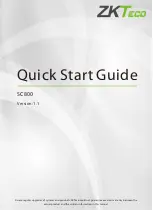
English
Electric pallet truck
EGU 14 P; EGU 22 P; EGU 30 P
F8.1.21
Design changes under reserve!
page 29
Safety instructions
Do not retain discharged batteries. Recharge as soon as possible.
Avoid heavy discharge of more of 80% of nominal capacity. The acidity should not be lower than 1,13 kg/l .
Heavy discharges reduce capacity and working life.
The most favourable operating temperature is b 25°C and + 40°C. Do not exceed the electrolyte
temperature of + 55°C.
Expect a temperature increase of approx. 10° up to 12 K (°)during charging.
Interrupt charging before having exceeded the temperature limit of 55°C.
At temperatures of more than 40°C more distilled water will evaporate. Control the acid level more often.
Heavy duty and winter temperatures require a daily charging of the battery, even if less than 80% of the
nominal capacity have been consumed.
Always keep the battery clean and dry and protect against soiling.
Thoroughly grease the pole terminals (pole screws)
Only refill distilled water according to DIN 43530.
For charging, only use charging devices which are suited for the battery size (capacity) and charging times.
Before charging, remove the battery covers respectively open the battery storage cap.
The ventilation holes of the fillers must be free to allow battery gasses to escape.
Always connect the charging device with correct poles, i.e. plus to plus, minus to minus.
Repairs on the battery and charging device should only be executed by trained and competent personnel.
After having completed the charging process the stacker has to remain in a ventilated room until all gasses
have safely escaped. Avoid handling the electric installation during charging and in the subsequent non-
working time.
7.4. Maintenance
Read carefully the attached instructions of use and maintenance, given by the company manufactur-
ing the battery.
Intervals
daily
Charge Battery
weekly
Control the electrolyte level. If required, refill cleaned water as per
DIN 43530 (distilled water) towards the end of recharging.
monthly
Control all cells for equal gassing at the end of recharging. Check
acidity and temperature.
quarterly
Check the pole terminals for tight connection.
Towards the end of the recharging control voltage
Check charging device and charge the battery.
7.5. Dangers and Preventive Measures
Dangers
Preventive Measures
The gasses developed during
charging are explosive.
Have charging area well ventilated. Avoid open flames and sparks.
Smoking prohibited.
The electrolyte (diluted sulphuric
acid) is corrosive.
Wear protective clothing, eye protectors and safety gloves.
Lead and lead connections are
harmful.
When handling batteries do not eat or drink.
Wash your hands thoroughly after having worked on batteries.
Used batteries to be disposed according to legal regulations.
















































